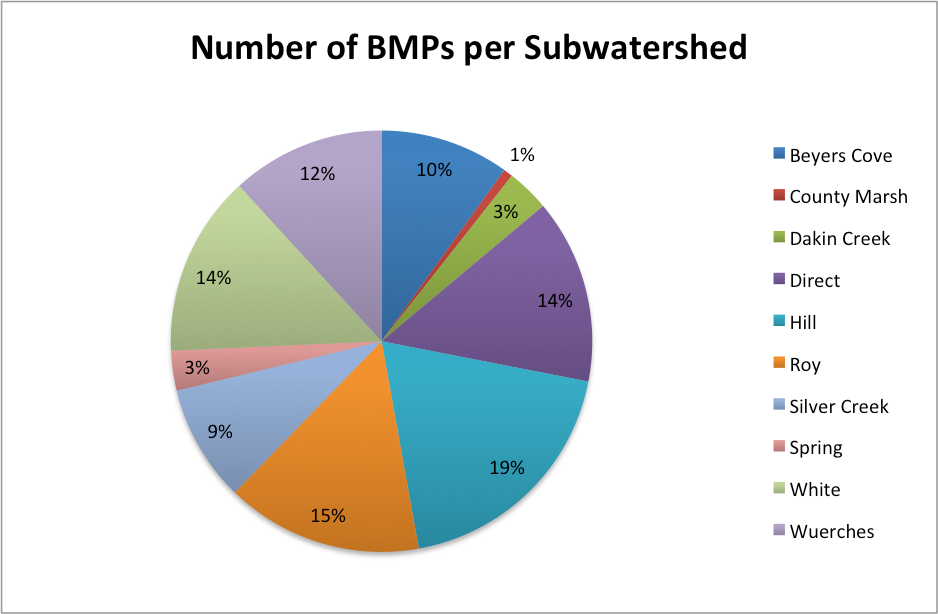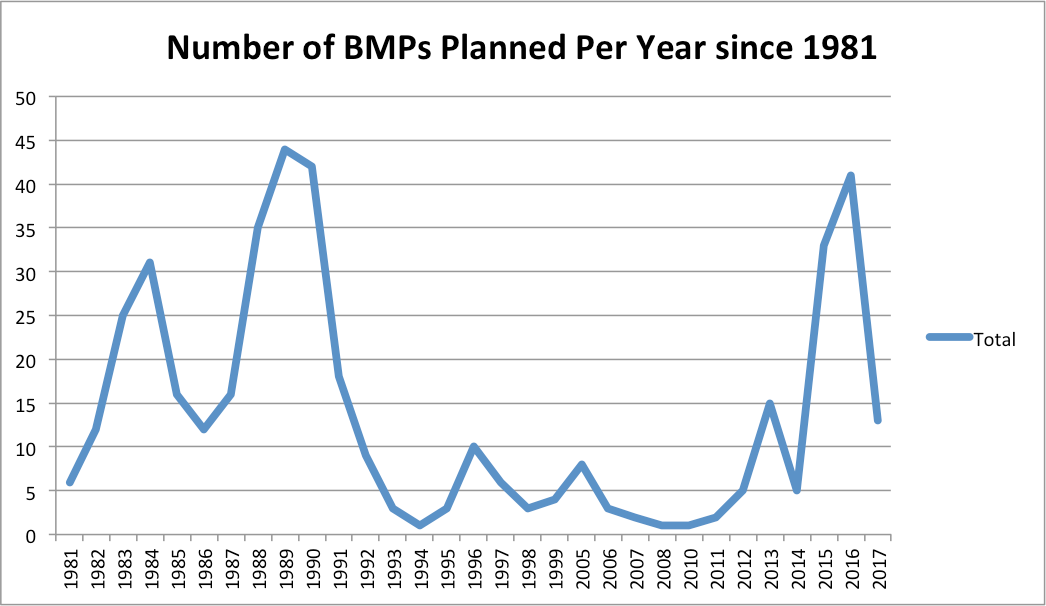Best Management Practices (BMPs) are land management practices that improve the quality of the land or water. Many of our partners are involved in educating farmers and landowners about BMPs, consulting with them about installing BMPs, and funding the implementation of BMPs.
Best Management Practices in Green Lake watershed since 1981



In the Green Lake Watershed, 51 percent of BMP projects implemented between 1981 and 2017 have been grade stabilization structures.
Other prevalent BMP types within the watershed include: grassed waterways (11 percent) and streambank and shoreline protection projects (10 percent), terraces (10 percent).
Grade stabilization structures: Intended to control the grade and head cutting in natural and artificial channels also called grade control structures. Improve water quality by reducing erosion and sediment-bound pollution. Prevent the formation of gullies.
Estimated impact on water quality: May reduce sediment yield by up to 99 percent annually. There is little data about the effectiveness of the structures at a watershed scale.
Grassed waterways: provide channels for concentrated flows through agricultural fields without causing erosion. Especially effective for channeling runoff from fields with steep grades.
Estimated impact on water quality: According to two studies, an 80-foot grassed waterway with a watershed ratio of 0.25 can reduce the concentration of suspended sediment by between 86 percent and 98 percent.
Streambank and shoreline protection: Biological and structural practices of stabilizing streambanks and shorelines along bodies of water. Effective at preventing erosion, maintaining adequate flow conveyance.
Estimated impact on water quality: The primary benefit of streambank stabilization is reduced erosion. The effectiveness of this goal varies greatly by stream type and individual site characteristics.
Terraces (4 percent): Earthen embankments or ridges built across a slope to slow runoff and reduce erosion.
Estimated impact on water quality: “Small, inconsistent reduction in herbicide concentration”
Sediment basins (4 percent): Basin used to detain sediment or nutrient-rich water to allow for treatment of water before it is released into water body.
Estimated impact on water quality: Removes up to 84% of total suspended solids, 50% of phosphorus, and 30% of nitrogen.
Information from this section derived from Tom Miller, Joel Peterson, et al, “The Agricultural BMP Handbook for Minnesota,” Minnesota Department of Agriculture, September 2012.
In the future, our partners in Green Lake watershed are working to develop a system of prioritization to determine where to install BMPs for maximum water quality improvement.